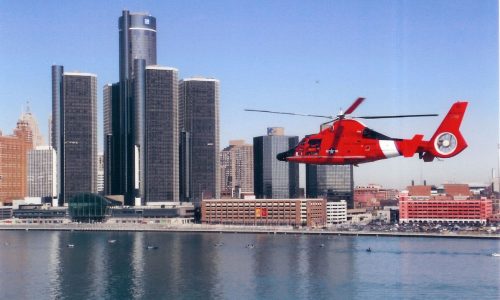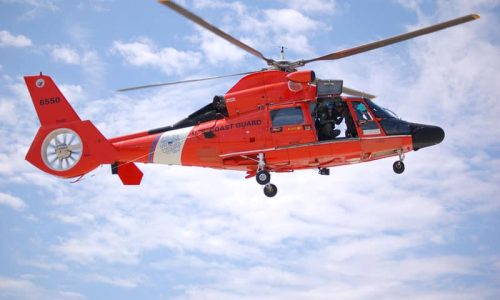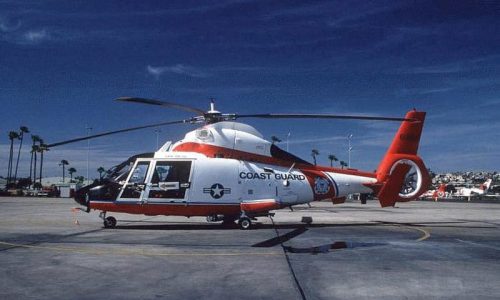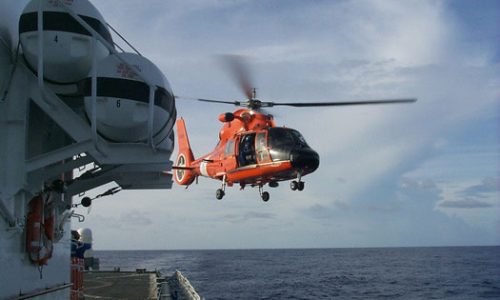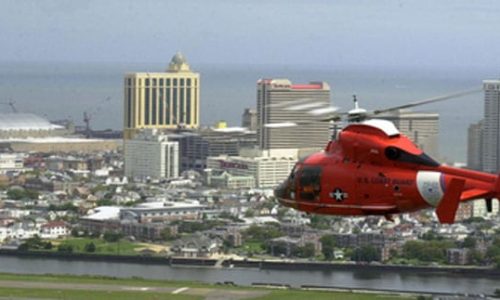The twin-engine Dolphins operate up to 150 miles off shore and will fly comfortably at 120 knots for three hours. Though normally stationed ashore, the Dolphins can be carried on board medium and high endurance Coast Guard Cutters. The cutters are capable of refueling and supporting the helicopter for the duration of a patrol.
The SRR is utilized for Search and Rescue, enforcement of laws and treaties, including drug interdiction, polar ice breaking, marine environmental protection including pollution control, and military readiness. Helicopters carried on Coast Guard cutters greatly enhance surveillance capabilities and mission effectiveness.
HH-65As are made of corrosion-resistant, composite-structure materials. A feature of the Dolphin is its computerized flight management system which integrates state-of-the-art communications and navigation equipment. This system provides automatic flight control. Selected search patterns can be flown automatically, freeing the pilot and copilot to concentrate on sighting the search object.
All HH-65 helicopters were upgraded and designated MH-65C as of 2008. The MH-65Cs variant reflects the installation of armament and a significantly upgraded communications system. Helicopter Interdiction Tactical Squadron (HITRON) Jacksonville was the first operational Coast Guard unit to employ the MH-65C and has a total of 10 aircraft assigned to replace the MH-68A Stingray aircraft.





